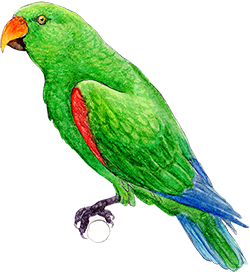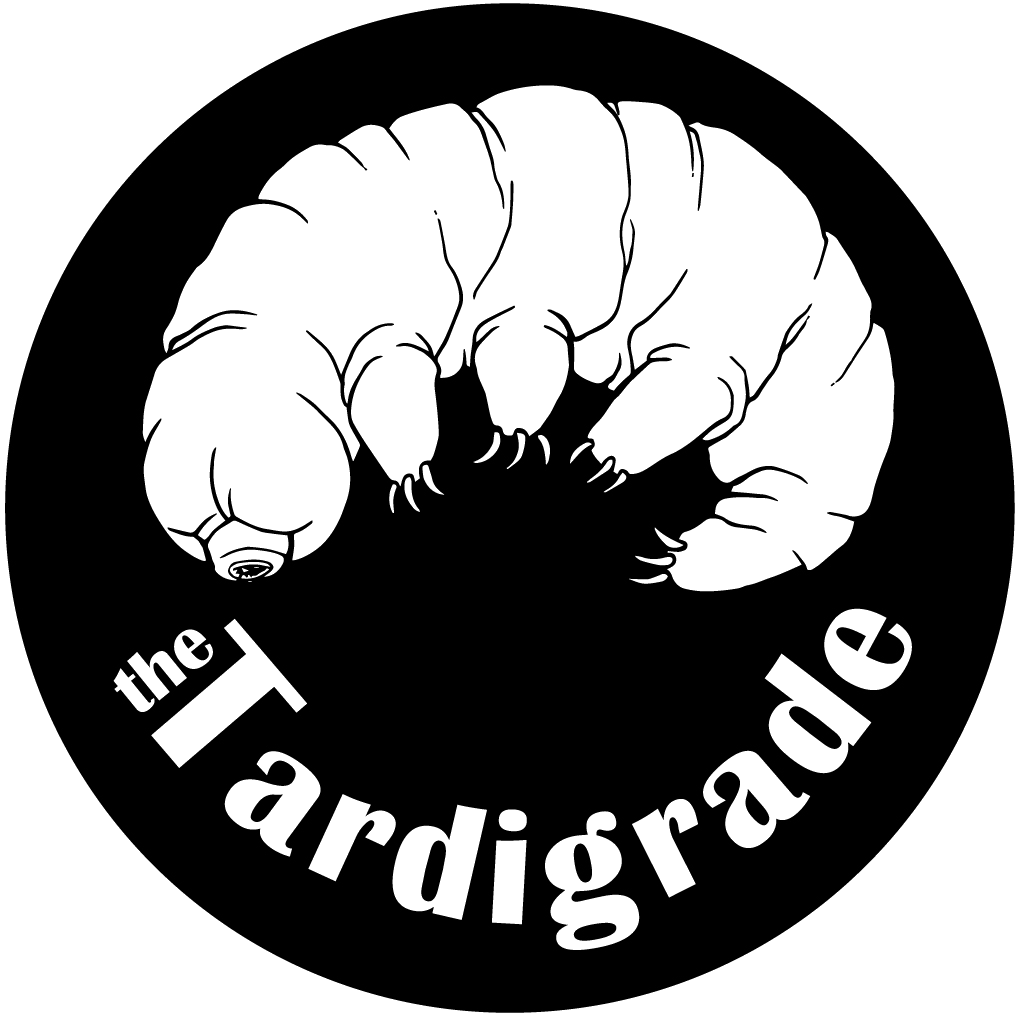
Parrot Plights: The Pet Trade & Habitat Loss
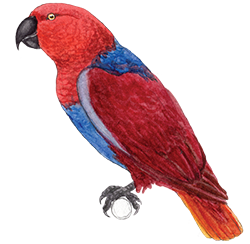
Parrots include some of the most charismatic animals. They are beautiful, social, colorful and smart.
This, unfortunately, has lead to their demise, as many people desire to keep them as pets.
The illegal parrot trade is one of the main forces driving many parrot populations towards extinction, and it has made parrots the most threatened birds in the world. Moreover, this practice is cruel on many levels and causes much suffering.
How many parrot species are there? Which ones are traded? What species are the most endangered? What are their major threats? Read on to learn all about parrots.
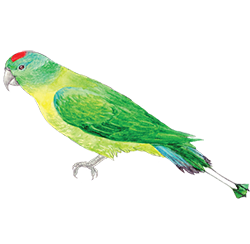
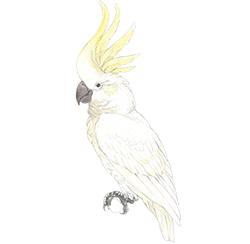
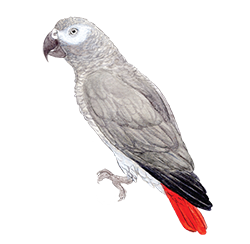
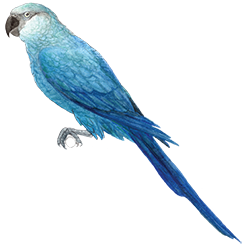
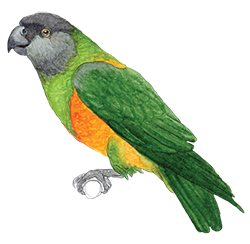
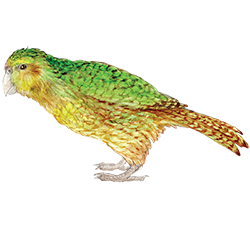
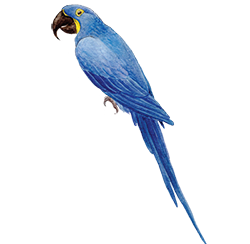
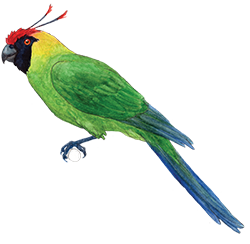
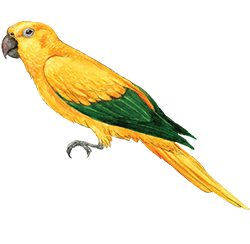
Parrot Diversity
Big & Small Parrots
Parrots are amongst the most beautiful and intelligent animals in the world.
Did you know, there are nearly 400 species of parrots? [1]Source: Wikipedia, HWB, IUCN, BirdLife International They come in many forms, including a wide range of sizes.
Each circle represents a species, hover over the circles to see details.
The biggest parrot species is the Hyacinth macaw, and they can reach about 100 cm in length.
On the other hand, the smallest parrots are the pygmy parrots, a genus of tiny parrots that can be as small as 8 cm in length.
Fat Parrots
Parrots also vary by weight a lot, from as light as 12 grams to up to 3 kg!
Kakapo
The Kakapo is a critically endangered flightless parrot from New Zealand. It is the fattest of all parrots and can weigh up to 3kg.
By Genus
There are about 89 parrot genera, in three families: the New Zealand parrots, the cockatoos and the true parrots [2]Source: Wikipedia, HWB, IUCN<, BirdLife International/span>.
Parrot Trade
Pet Trade
Parrots have been coveted as pets for centuries [3]Source: The illegal parrot trade: a literature review.
Most parrot species are traded as part of the pet or cage-bird trade, in the present or in the past, in the domestic market or internationally, legally or illegally.
From here on all the species that are threatened by trade are marked with a black outline.
IUCN Status
Nearly 30% of parrot species are threatened with extinction according to the latest assessment of IUCN International Union for Conservation of Nature .
Parrots face many threats, including habitat loss, trade, introduced species, and climate change [4]Source: IUCN .
From this section on, the circles (different species) will be colored by IUCN status.

Cockatoos
There are 21 species of cockatoos, with native ranges mostly in Australia and Indonesia.
Sadly most species of cockatoos have become common pets and some species are often traded illegally and unsustainably.
For example, Salmon-crested cockatoos were so unsustainably trapped for the cage-bird trade that more than 70,000 individuals were exported between 1981 and 1990, and illegal trade is ongoing [5]Source: IUCN, UNEP-WCMC CITES Trade Database .
Palm cockatoos can be sold for as much as $30000 a bird on the black market [6]Source: National Geographic.
Macaws
There are 19 species of macaws, which are all found in Latin America, some of which are extremely threatened.
The Glaucous macaw has not been sighted since the 1960s and is possibly extinct in the wild. Other species in the same genus are also threatened with extinction due to deforestation and the pet trade.
Amazons
There are about 35 Amazon species, many of which are threatened by habitat loss, driven often by agriculture expansion, as well as the international trade.
For example, the pet trade has had a great effect on many Yellow naped amazon populations in the 1980s and 1990s.
In some specific regions, close to 100% of known nests were poached [7]Source: L. Joyner in litt. 2011.
The Turquoise-fronted Amazon is another species that has also been heavily traded. Since 1981, over 400,000 wild-caught individuals have been recorded in the international trade [8] Source: IUCN, UNEP-WCMC CITES Trade Database .
Poicephalus
The genus Poicephalus includes many parrot species found in Africa. It includes the Senegal parrot, the most traded parrot species in the world.
Many species in the group are facing local extinctions in African countries due to the pet trade and deforestation.
For example, over 70,000 Meyer’s parrots have been recorded in the international trade since 1981, and they have mostly disappeared from South Africa [9]Source: IUCN, UNEP-WCMC CITES Trade Database. National Geographic. .
Racquet-tail Parrots
Species in the genus Prioniturus are found in the Philippines and Indonesia and they can be easily recognized by their elongated central tail feathers.
The greatest threats to this group of parrots are deforestation, often exacerbated by logging / mining operations, and sometimes the illegal trade.
Most trade involved these species is on a local level for the cage bird trade, such as the Green Racquet-tail and the Blue-headed raccquet-tail.
Group by region
The greatest diversity of parrots is in Latin America and Australasia.
The illegal parrot trade is rampant in Latin America, the Caribbean, Indonesia and Africa, where laws against it can be lax or difficult to enforce.
Species on smaller islands tend to be more threatened, as they are also affected by introduced species and climate change, such as the increase in number and intensity of hurricanes.
Latin America
From the 1950s on, there has been an export of millions wild parrots from Latin America to international markets [10] Source: TRAFFIC , before CITES started regulating trade in the 1970s.
In the 1980s and 1990s, the United States became the largest importer of neotropical parrots. Roughly 50,000–150,000 neotropical parrots being brought in each year [11] Source: Ferreira Pires 2011.
Africa
African parrots are among the most traded of all birds listed on CITES, with over 3.3 million African parrots have been reported in trade since 1975, leading to collapses of some wild populations
[12]Source: IUCN Redlist, UNEP-WCMC CITES Trade Database. National Geographic. .
This unregulated trade in African parrots peaked in the 1980s and ’90s, and still exists today.
Parrot Conservation
Habitat Loss
Nearly 60% of all parrot species are threatened by habitat loss.
Many species are threatened by accelerating deforestation as land is cleared for livestock, agriculture, and development.
Pet Trade
Nearly 40% of all parrot species are threatened by the pet trade.
Pet Trade
There are now more parrots than ever before in captivity, and fewer parrots in the wild than at any time in recorded history.
Pet Trade
In addition, the pet trade is cruel on many levels, from parrots forcibly taken from their homes in the wild, to the high number of casualties during transport, to sometimes being kept by inexperienced pet owners who cannot properly take care of them.
Critically Endangered Parrots
There are 17 parrot species currently listed as critically endangered by IUCN. The Spix's Macaw has recently been uplisted to being extinct in wild.
Threats of Critically Endangered Parrots
Climate change
Disease
Fires
Habitat loss
Hunting
Introduced species
Pet trade
Wind farms
Species Greatly Affected By Trade
Spix Macaw 
The Spix’s Macaw is the latest victim of the trade and is now thought to be extinct in the wild. The decline of the species has generally been attributed to two main factors: long-term destruction of the specific woodland habitat on which the species depended and trapping for the illegal live bird trade [13]Source: IUCN Red List.
[Map reference] BirdLife International 2019. Cyanopsitta spixii. The IUCN Red List of Threatened Species 2019. Downloaded on 18 April 2020. .
Hyacinth Macaw 
The Hyacinth macaw was close to being extinct in the wild, with as few as 1500 individuals in 1990, after approximately 10,000 of them were taken from the wild for the pet trade
[14]Source: National Geographic - This Amazon bird’s eggs are black-market gold. Here’s why [Map reference] BirdLife International 2016. Anodorhynchus hyacinthinus. The IUCN Red List of Threatened Species 2016. Downloaded on 18 April 2020. .
Senegal parrot 
Over the last 30 years as many as 3 million Senegal parrots have been removed from the wild with over 800,000 CITES Export permits having been issued since 1975 [15]Source: IUCN Red List. National Geographic - The World’s Most Traded Wild Birds? .
In 2005, the Senegal parrot was the most traded bird that was listed on the CITES Appendix II, with an average of over 45,000 individuals being removed from the wild each year [Map reference] BirdLife International 2019. Poicephalus senegalus. The IUCN Red List of Threatened Species 2019. Downloaded on 18 April 2020. .
Yellow Crested Cockatoo 
The yellow crested cockatoo is found across Indonesia and the rapid decline of its populations is almost entirely attributable to unsustainable exploitation for domestic and international trade. Illegal trapping continues in many areas such as across South East Sulawesi [16]Source: IUCN Red List. Anon 2012. .
They are now extinct on many islands and are near extinct on many other islands [Map reference] BirdLife International 2018. Cacatua sulphurea. The IUCN Red List of Threatened Species 2018. Downloaded on 18 April 2020. .
African Gray Parrot 
This parrot is one of the most popular avian pets in Europe, the US, and the Middle East due to its longevity (80 years!) and ability to mimic humans [17] Source: F. Maisels in litt. 2006, H. Rainey in litt. 2006 .
Spanning two decades until 2001, over 1.3 million wild-caught individuals of both African gray and Timneh parrots were traded internationally [18] Source: UNEP-WCMC 2016. National Geographic. , with pre-trade mortality 30-66%!
[19] Source:Fotso 1998a, b, McGowan 2001, Hart 2013.
It was the second-most traded parrot in world in the 1980s after Fischer's lovebird [20] Source: Handbook of the Birds of the World Alive. IUCN Redlist. . Thankfully, it has been listed on Appendix I of CITES in 2016, which means that international trade is not allowed [Map reference] BirdLife International 2018. Psittacus erithacus. The IUCN Red List of Threatened Species 2018. Downloaded on 18 April 2020. .
Golden Parakeet 
This specis is endemic to Brazil. With its beautiful yellow plumage, this speceis is highly saught after for the caged-bird trade and is one of the most prized birds in aviculture.
Habitat loss compounded by intense levels of smuggling has lead to population decline of this species [21] Source: Handbook of the Birds of the World Alive. IUCN Redlist.
[Map reference] BirdLife International 2018. Guaruba guarouba. The IUCN Red List of Threatened Species 2018. Downloaded on 19 April 2020. .
Species Decimated By Introduced Species
Kakapo 
Kakapos are flightless parrots that are endemic to New Zealand. They were once abundant throughout the country back in the 19th century, but many of them were hunted while others suffered from the introduced species brought over by the European settlers [22] Source: Smithsonian Magazine .
They were close to extinction with as few as 51 individuals left in 1995, but now due to the efforts of many individuals and the discovery that the rimu fruit encourages them to breed [23] Source: Hurst et al. 2016 Preferred natural food of breeding Kakapo is a high value source of calcium and vitamin D. ,
their population has increased to over 200 at the moment. But they are still facing threats such as disease, having a small gene pool, and introduced species [Map reference] BirdLife International 2018. Strigops habroptila. The IUCN Red List of Threatened Species 2018. Downloaded on 19 April 2020..
Horned Parakeet 
The horned parakeet is found in New Caledonia and its populations have been declining since the 1880s. It's major threats are introduced species, such as the black rat, the wildcat and the Rusa deer, as well as habitat loss and disease (Psittacine Beak and Feather Disease).
[Map reference] BirdLife International 2016. Eunymphicus cornutus. The IUCN Red List of Threatened Species 2016. Downloaded on 19 April 2020. .
Parrot Diversity
Parrot Size
Parrots are amongst the most beautiful and intelligent animals in the world.
Did you know, there are nearly 400 species of parrots? [1]Source: Wikipedia, HWB, IUCN, BirdLife International They come in many forms, including a wide range of sizes.
Each circle represents a parrot species.

The biggest parrot species is the Hyacinth macaw, and they can reach about 100 cm in length.
On the other hand, the smallest parrots are the pygmy parrots, a genus of tiny parrots that can be as small as 8 cm in length.

Parrots also vary by weight a lot, from as light as 12 grams to up to 3 kg!

The Kakapo is a critically endangered flightless parrot from New Zealand. It is the fattest of all parrots and can weigh up to 3kg.

By Genus
There are about 89 parrot genera, in three families: the New Zealand parrots, the cockatoos and the true parrots [2]Source: Wikipedia, HWB, IUCN<, BirdLife International/span>.

Parrot Trade
Parrots have been coveted as pets for centuries [3]Source: The illegal parrot trade: a literature review.
Most parrot species are traded as part of the pet or cage-bird trade, in the present or in the past, in the domestic market or internationally, legally or illegally.
From here on all the species that are threatened by trade are marked with a black outline.

IUCN Status
Nearly 30% of parrot species are threatened with extinction according to the latest assessment of IUCN International Union for Conservation of Nature .
Parrots face many threats, including habitat loss, trade, introduced species, and climate change [4]Source: IUCN .
From this section on, the circles (different species) will be colored by IUCN status.


Cockatoos
There are 21 species of cockatoos, with native ranges mostly in Australia and Indonesia.
Sadly most species of cockatoos have become common pets and some species are often traded illegally and unsustainably.
For example, Salmon-crested cockatoos were so unsustainably trapped for the cage-bird trade that more than 70,000 individuals were exported between 1981 and 1990, and illegal trade is ongoing [5]Source: IUCN, UNEP-WCMC CITES Trade Database .
Palm cockatoos can be sold for as much as $30000 a bird on the black market [6]Source: National Geographic.

Macaws
There are 19 species of macaws, which are all found in Latin America, some of which are extremely threatened.
The Glaucous macaw has not been sighted since the 1960s and is possibly extinct in the wild. Other species in the same genus are also threatened with extinction due to deforestation and the pet trade.

Amazons
There are about 35 Amazon species, many of which are threatened by habitat loss, driven often by agriculture expansion, as well as the international trade.
For example, the pet trade has had a great effect on many Yellow naped amazon populations in the 1980s and 1990s.
In some specific regions, close to 100% of known nests were poached [7]Source: L. Joyner in litt. 2011.
The Turquoise-fronted Amazon is another species that has also been heavily traded. Since 1981, over 400,000 wild-caught individuals have been recorded in the international trade [8] Source: IUCN, UNEP-WCMC CITES Trade Database .

Poicephalus
The genus Poicephalus includes many parrot species found in Africa. It includes the Senegal parrot, the most traded parrot species in the world.
Many species in the group are facing local extinctions in African countries due to the pet trade and deforestation.
For example, over 70,000 Meyer’s parrots have been recorded in the international trade since 1981, and they have mostly disappeared from South Africa [9]Source: IUCN, UNEP-WCMC CITES Trade Database. National Geographic. .

Racquet-tail Parrots
Species in the genus Prioniturus are found in the Philippines and Indonesia and they can be easily recognized by their elongated central tail feathers.
The greatest threats to this group of parrots are deforestation, often exacerbated by logging / mining operations, and sometimes the illegal trade.
Most trade involved these species is on a local level for the cage bird trade, such as the Green Racquet-tail and the Blue-headed raccquet-tail.

Group by region
The greatest diversity of parrots is in Latin America and Australasia.
The illegal parrot trade is rampant in Latin America, the Caribbean, Indonesia and Africa, where laws against it can be lax or difficult to enforce.
Species on smaller islands tend to be more threatened, as they are also affected by introduced species and climate change, such as the increase in number and intensity of hurricanes.

Latin America
From the 1950s on, there has been an export of millions wild parrots from Latin America to international markets [10] Source: TRAFFIC , before CITES started regulating trade in the 1970s.
In the 1980s and 1990s, the United States became the largest importer of neotropical parrots. Roughly 50,000–150,000 neotropical parrots being brought in each year [11] Source: Ferreira Pires 2011.

Africa
African parrots are among the most traded of all birds listed on CITES, with over 3.3 million African parrots have been reported in trade since 1975, leading to collapses of some wild populations
[12]Source: IUCN Redlist, UNEP-WCMC CITES Trade Database. National Geographic. .
This unregulated trade in African parrots peaked in the 1980s and ’90s, and still exists today.

Parrot Conservation
Habitat Loss
Nearly 60% of all parrot species are threatened by habitat loss.
Many species are threatened by accelerating deforestation as land is cleared for livestock, agriculture, and development.

Pet Trade
Nearly 40% of all parrot species are threatened by the pet trade.

There are now more parrots than ever before in captivity, and fewer parrots in the wild than at any time in recorded history.

In addition, the pet trade is cruel on many levels, from parrots forcibly taken from their homes in the wild, to the high number of casualties during transport, to sometimes being kept by inexperienced pet owners who cannot properly take care of them.

Critically Endangered Parrots
There are 17 parrot species currently listed as critically endangered by IUCN. The Spix's Macaw has recently been uplisted to being extinct in wild.
Here are some of their threats:
Species Greatly Affected By Trade
Spix Macaw 
The Spix’s Macaw is the latest victim of the trade and is now thought to be extinct in the wild. The decline of the species has generally been attributed to two main factors: long-term destruction of the specific woodland habitat on which the species depended and trapping for the illegal live bird trade [13]Source: IUCN Red List.
[Map reference] BirdLife International 2019. Cyanopsitta spixii. The IUCN Red List of Threatened Species 2019. Downloaded on 18 April 2020. .


Hyacinth Macaw 
The Hyacinth macaw was close to being extinct in the wild, with as few as 1500 individuals in 1990, after approximately 10,000 of them were taken from the wild for the pet trade
[14]Source: National Geographic - This Amazon bird’s eggs are black-market gold. Here’s why [Map reference] BirdLife International 2016. Anodorhynchus hyacinthinus. The IUCN Red List of Threatened Species 2016. Downloaded on 18 April 2020. .


Senegal parrot 
Over the last 30 years as many as 3 million Senegal parrots have been removed from the wild with over 800,000 CITES Export permits having been issued since 1975 [15]Source: IUCN Red List. National Geographic - The World’s Most Traded Wild Birds? .
In 2005, the Senegal parrot was the most traded bird that was listed on the CITES Appendix II, with an average of over 45,000 individuals being removed from the wild each year [Map reference] BirdLife International 2019. Poicephalus senegalus. The IUCN Red List of Threatened Species 2019. Downloaded on 18 April 2020. .


Yellow Crested Cockatoo 
The yellow crested cockatoo is found across Indonesia and the rapid decline of its populations is almost entirely attributable to unsustainable exploitation for domestic and international trade. Illegal trapping continues in many areas such as across South East Sulawesi [16]Source: IUCN Red List. Anon 2012. .
They are now extinct on many islands and are near extinct on many other islands [Map reference] BirdLife International 2018. Cacatua sulphurea. The IUCN Red List of Threatened Species 2018. Downloaded on 18 April 2020. .


African Gray Parrot 
This parrot is one of the most popular avian pets in Europe, the US, and the Middle East due to its longevity (80 years!) and ability to mimic humans [17] Source: F. Maisels in litt. 2006, H. Rainey in litt. 2006 .
Spanning two decades until 2001, over 1.3 million wild-caught individuals of both African gray and Timneh parrots were traded internationally [18] Source: UNEP-WCMC 2016. National Geographic. , with pre-trade mortality 30-66%!
[19] Source:Fotso 1998a, b, McGowan 2001, Hart 2013.
It was the second-most traded parrot in world in the 1980s after Fischer's lovebird [20] Source: Handbook of the Birds of the World Alive. IUCN Redlist. . Thankfully, it has been listed on Appendix I of CITES in 2016, which means that international trade is not allowed [Map reference] BirdLife International 2018. Psittacus erithacus. The IUCN Red List of Threatened Species 2018. Downloaded on 18 April 2020. .


Golden Parakeet 
This specis is endemic to Brazil. With its beautiful yellow plumage, this speceis is highly saught after for the caged-bird trade and is one of the most prized birds in aviculture.
Habitat loss compounded by intense levels of smuggling has lead to population decline of this species [21] Source: Handbook of the Birds of the World Alive. IUCN Redlist.
[Map reference] BirdLife International 2018. Guaruba guarouba. The IUCN Red List of Threatened Species 2018. Downloaded on 19 April 2020. .


Species Decimated By Introduced Species
Kakapo 
Kakapos are flightless parrots that are endemic to New Zealand. They were once abundant throughout the country back in the 19th century, but many of them were hunted while others suffered from the introduced species brought over by the European settlers [22] Source: Smithsonian Magazine .
They were close to extinction with as few as 51 individuals left in 1995, but now due to the efforts of many individuals and the discovery that the rimu fruit encourages them to breed [23] Source: Hurst et al. 2016 Preferred natural food of breeding Kakapo is a high value source of calcium and vitamin D. ,
their population has increased to over 200 at the moment. But they are still facing threats such as disease, having a small gene pool, and introduced species [Map reference] BirdLife International 2018. Strigops habroptila. The IUCN Red List of Threatened Species 2018. Downloaded on 19 April 2020..


Horned Parakeet 
The horned parakeet is found in New Caledonia and its populations have been declining since the 1880s. It's major threats are introduced species, such as the black rat, the wildcat and the Rusa deer, as well as habitat loss and disease (Psittacine Beak and Feather Disease).
[Map reference] BirdLife International 2016. Eunymphicus cornutus. The IUCN Red List of Threatened Species 2016. Downloaded on 19 April 2020. .


What can you do to help save parrots?
1. Adopt don't shop. Never buy a wild-caught parrot, and even if the parrot is bred, it is still better to adopt as there are many abandoned parrots that need homes.
2. If you decide to adopt a parrot, do a lot of research and make sure to proporly take care of them as they have many needs.
3. If you have time, volunteer at local parrot / animal rescues.
4. When traveling, support ecotourism to provide an alternative income for the local people and to reduce the likelihood of illegal trapping.
5. Educate and raise awareness about parrots and the pet trade as much as you can!
6. Donate to organizations working to conserve parrots.
7. Since deforestation & habitat loss is one of the major threats of parrots, make sure to buy products - like bananas and coffee - that are grown in a sustainable way.
Recommendations adopted from World Parrot Trust & Rainforest Alliance
